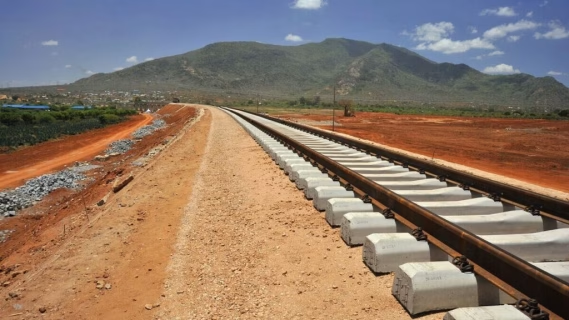Kenya and Ethiopia signed a bilateral agreement to advance the construction of the $13.8 billion, 3,000-kilometer electrified Standard Gauge Railway (SGR) linking Kenya’s Lamu Port to Addis Ababa, Ethiopia. The agreement was signed between Kenya’s Cabinet Secretary for Transport, Kipchumba Murkomen, and Ethiopia’s Minister of Transport, Dr. Alemu Sime. The proposed railway will form part of the Lamu Port–South Sudan–Ethiopia Transport (LAPSSET) Corridor, a flagship regional infrastructure project centered around Lamu Port.
The railway is planned to run from Lamu to Isiolo, with a 200-kilometer stretch extending toward Nairobi. From there, it is designed to branch into three routes leading to Addis Ababa, Nairobi, and Juba, the capital of South Sudan. Murkomen stated that the two countries had focused efforts on developing the Lamu–Isiolo–Moyale section. The section is expected to connect to the Mombasa–Nairobi–Malaba SGR. Furthermore, he noted that both governments had agreed to establish a bilateral steering committee comprising officials from Kenya and Ethiopia to fast-track the implementation of the LAPSSET Corridor and support its overall infrastructure development.

Other than the Kenya-Ethiopia railway project, Ethiopia seems to be focused on the recent AMG Industrial Park railway project. Hailed as the country’s domestically financed railway line, the project is expected to have a monumental significance. The link is expected to connect the industrial park to Endode station as noted by the Ethio-Djibouti Corporation. Furthermore, the project is being designed and executed by local-based engineers. It is scheduled for completion within six months and expected to have a vital impact. Its completion will support the transport of AMG’s products such as coffee and metals. The railway will also play a vital link from the park to regional and international markets. “Construction of this line is expected to streamline the movement of goods between industrial zones and the railway network,” said Takele Uma, CEO of Ethio-Djibouti Railways. Once complete, it will form part of a network linking industrial parks, free-trade zones, agro-processing areas and logistics centers.
Also read: $13.8 Billion Kenya-Ethiopia Railway Construction Plans Resume
Kenya-Ethiopia Railway Construction Progress
So far only three berths have been fully completed at Lamu which went at a total cost of $400 million. Kenya has shown keenness in developing Lamu Port which will be essential in handling goods that have been imported and are expected to be transported to the southern region of Ethiopia. The construction works of the new railway line project are anticipated to kick off in the year 2025 and are going to cost a total of $13.8 billion and the line is expected to have an internal rate of return of 12 percent.
This return of return was revealed by the Lapsset Corridor Development Authority (LCDA). The two countries of Kenya and Ethiopia have now gone in search of funds in order to finance their project. Currently, Kenya is searching for $9 million from the African Union Infrastructure Fund that will be utilized for feasibility studies to find out the economic and technical feasibility of constructing the new railway line.

